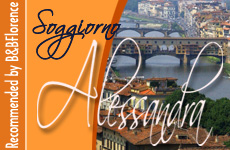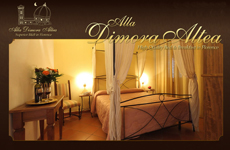Admire Florence museums! Try our New
Online Florence Museums Ticket Reservations System!!!
And you will get ...
» Complete customer
satisfaction or your money back.
» Cryptographed online ordering available.
» The more you buy the more you save.
Without queueing up!
|
 Uffizi
Gallery »»» Uffizi
Gallery »»»
The most important art gallery in Italy and the earliest
museum in modern Europe, it displays the greatest
paintings from every age. It houses the most significant
classical sculptures from the Medici collections and a big
selection of Italian and European painting from 13th to 18th
C., mainly late Medieval and Renaissance Tuscan
works... »»» |
 Accademia
Gallery »»» Accademia
Gallery »»»
It is one of the most popular museums in the world because
it displays the renowned Michelangelo’s David.
The Gallery was founded by Grand Duke Pietro Leopoldo of Lorraine as
an educational art collection destined to the students
at the Academy of Fine Arts. After rearrangements and 19th C.
acquisitions, it has become a celebrated museum dedicated to Michelangelo.
Along with Michelangelo’s scupltures, the Gallery
shows significant works testifying the development of Florentine
art from 13th C. up to 19th C.
The Gallery is housed in the 14th C. rooms once belonging
to the old Hospital of St. Matthew and the old convent
of St. Niccolò of Cafaggio, renovated in the late 18th
C. to house the Gallery. In 1882 the “Tribuna” hall
was built in order to display Michelangelo’s David... »»» |
 Palatina
Gallery and Royal Apartments »»» Palatina
Gallery and Royal Apartments »»»
The Gallery is called “Palatina” because
it is located in the “Palazzo” of the ruling family,
the imposing Pitti Palace, royal residence of
the Medici, of the Lorraine and
lastly of the Savoy dynasty.
The collection of paintings, arranged in rooms
sumptuously decorated with baroque stuccoes and frescoes, is a
rare and precious example of a private princely gallery.
The monumental royal apartments, joined to the gallery,
show furnishings of the time when they were used by the Savoy,
Kings of Italy... »»» |
 Bargello
Museum »»» Bargello
Museum »»»
The Museum displays the most important collection
of Renaissance Tuscan sculpture in the world, with fundamental works
by Donatello, Della Robbia, Verrocchio and Michelangelo,
along with a significant group of medieval French ivories, Italian
majolicas and arms.
The museum is housed in the medieval Palazzo del Capitano del Popolo (or
Bargello Palace), built from 1255 and enlarged in the
14th C., residence of the Captain of the People, of the Podestà and
lastly of the Captain of Justice (called Bargello), that
is the chief of the police (16th C.), when the palace was transformed into
a prison.
The building was completely restored in order to house the Bargello
National Museum, opened in 1865... »»» |
 Medici
Chapels »»» Medici
Chapels »»»
Behind the church of San Lorenzo, the Medici
Chapels Museum consists of the Medici Crypt,
the Chapel of the Princes and Michelangelo’s
New Sacristy.
Along with the sculptural and architectural decorations,
the museum displays the Treasure of the San Lorenzo Basilica:
reliquaries and liturgical objects, great examples of Renaissance
and Baroque goldsmith’s art.
The architecture and the sculptural decoration, including funerary
monuments of members of the Medici family, were designed and begun
by Michelangelo before he went to Rome. The New
Sacristy was carried out and arranged as we see today by Giorgio
Vasari and Bartolomeo Ammannati... »»» |
 Modern
Art Gallery »»» Modern
Art Gallery »»»
In Pitti Palace, on the second floor, the Modern
Art Gallery shows a complete overview of Italian
painting from Neoclassicism to the 20th century.
It was opened in 1924 in order to display modern and contemporary
works coming from the main Florentine State and Municipal
collections.
The present arrangement shows artworks from the time of the Grand
Duke Pietro Lepoldo of Lorraine (2nd half of 18th C.) up to 1920s.
The core of the museum is a collection of paintings by
a group of Tuscan artists, called “the Macchiaioli”,
who in the middle of 19th C. started to deeply
renew European painting, at the same time as the French Impressionists.
Other outstanding artists on display: Camille Pissarro, Elisabeth
Chaplin and, from Italy, Giovanni Boldini, Gaetano Previati, Medardo Rosso,
Galileo Chini... »»» |
 San
Marco Museum »»» San
Marco Museum »»»
Once a Dominican monastery, it houses the
largest collection of paintings by Fra Giovanni Angelico in the world.
The Museum is housed in the Dominican monastery of San Marco, built
between 1438 and 1444 by will of Cosimo the Elder of
the Medici family, on a design by the architect Michelozzo,
who created an architectural masterpiece of functionality, harmony and
elegance... »»» |
 Archaeological
Museum »»» Archaeological
Museum »»»
One of the most important archaeological museums in Italy,
it is mainly renowned for a very important Etruscan collection and
an amazing Egyptian section, second best in Italy.
The Museum was opened in 1888 when most of the
Etruscan, Greek and Roman works collected by the Medici and the Lorraine
families were moved from the Uffizi Gallery to the Palazzo della
Crocetta (a 16th C. Medici property). Also Egyptian works discovered
by a French-Tuscan expedition to Egypt (1828) were moved to the museum... »»» |
 Silver
Museum »»» Silver
Museum »»»
The Museo degli Argenti (Silverware Museum) displays
the Medici Treasure, the jewels and
the most precious objects once belonged to the Lords
of Florence.
The museum, opened in the late 19th C., is located on
the ground floor of Pitti Palace, in the summer
apartments of the Medici court, sumptuously decorated
with baroque frescoes.
It shows the huge collection of precious objects once belonged
to the Grand Dukes of Tuscany, with later additions coming from
the ancient Gems Cabinet of the Uffizi, from the collection
of jewels belonged to Anna Maria Luisa de’ Medici,
from the Treasure of the prince-bishops of Salzburg and
from the Treasure of San Lorenzo in Florence... »»» |
 Opificio
delle Pietre Dure »»» Opificio
delle Pietre Dure »»»
The Opificio delle Pietre Dure (Semi-precious Stones
Workshop) was officially founded in 1588 by Ferdinando
I de’ Medici.
The Museum is dedicated to the traditional art of the Florentine
mosaic (or inlaid work) in semi-precious stones.
That ancient art, brought to new life thanks to
the Medici family, was already known by the Egyptians, Greeks
and Romans who created mosaics using marble and semi-precious stones (quartz,
chalcedony, jasper, lapis-lazuli).
For centuries Florentine craftsmen have skilfully cut the naturally
coloured stones into shapes, fitting them together to create magnificent
architectural decorations as well as the most precious objects... »»» |
 Boboli
Garden of Palazzo Pitti »»» Boboli
Garden of Palazzo Pitti »»»
The Garden, which stretches on the Boboli
hill from Pitti Palace to Belvedere Fort, is one
of the largest and most refined gardens in Italy, first
example and model for the royal gardens of European courts... »»» |
 Piccolomini
Palace in Pienza »»» Piccolomini
Palace in Pienza »»»
The summer residence of Enea Silvio Piccolomini,
Pope Pius II, Palazzo Piccolomini in Pienza is
the first example of Renaissance architecture.
Built in 1459 by famed architect Bernardo
Rossellino, student of Leon Battista Alberti,
recent major renovation has restored its utmost splendour, both
internally and externally.
The architectural complex is presented as the realisation of Pius
II’s ambitious humanist project for the ideal city.
The Piccolomini family lived in the Palazzo until 1962 when, by testamentary
dispositions, it was transferred to the Ente morale di Siena Società di
Esecutori di Pie Disposizioni... »»» |












 Versione Italiana
Versione Italiana Auf Deutsch
Auf Deutsch


